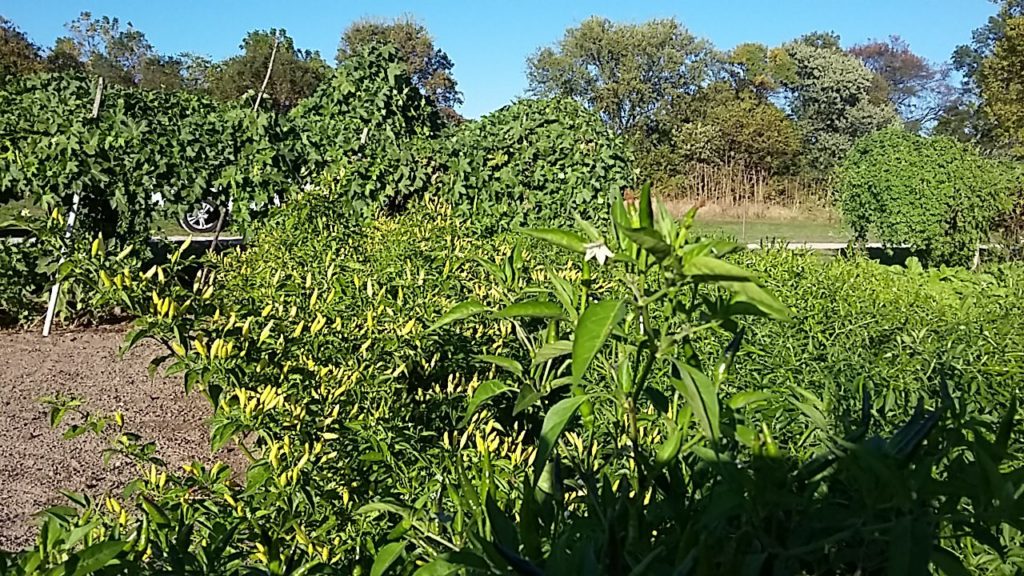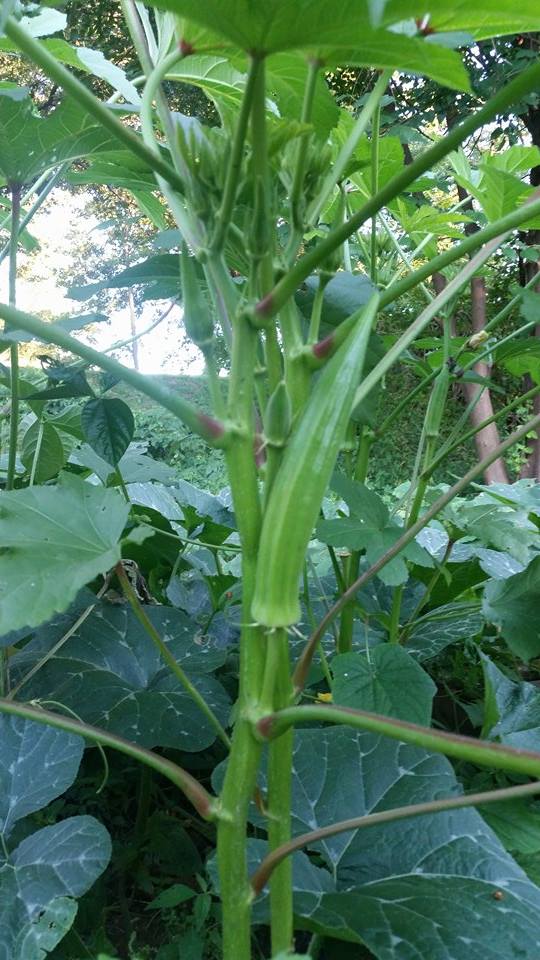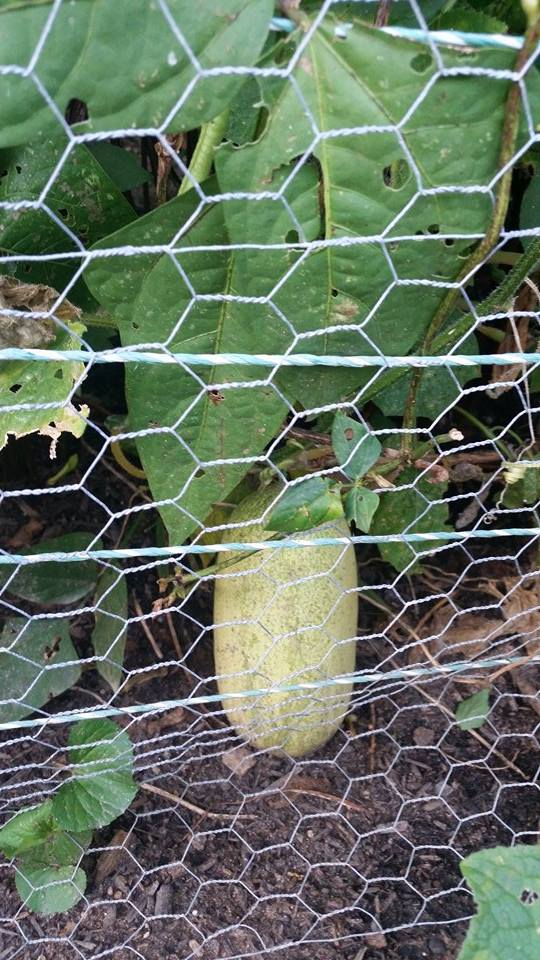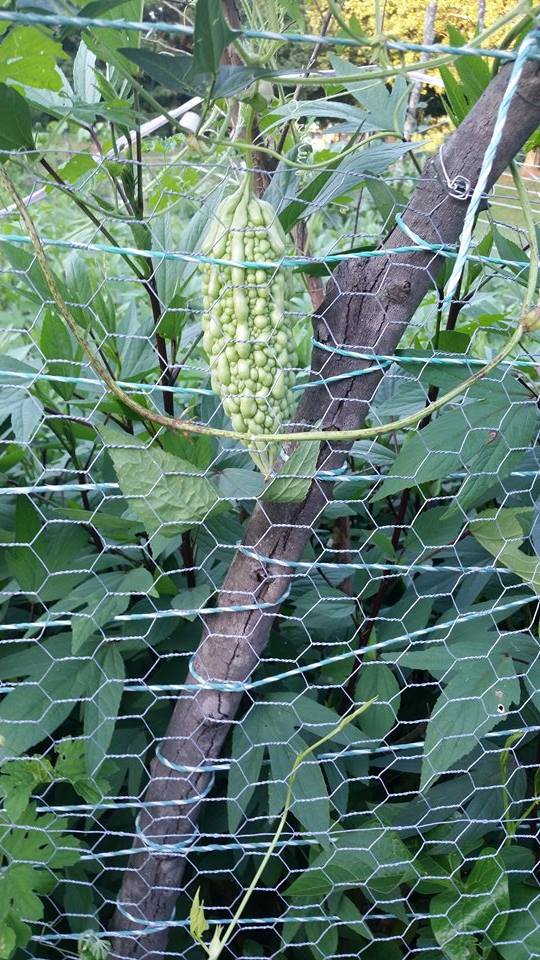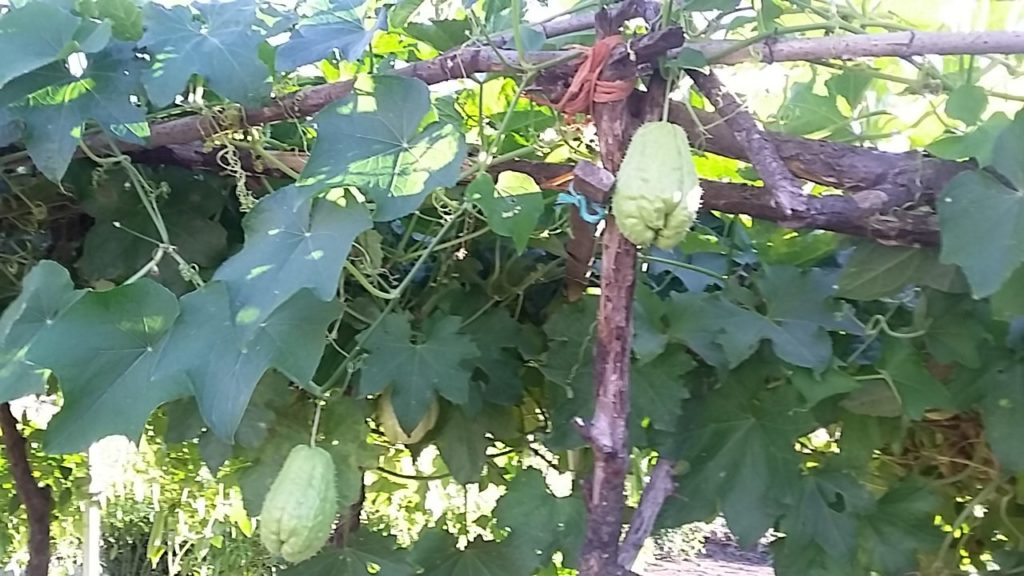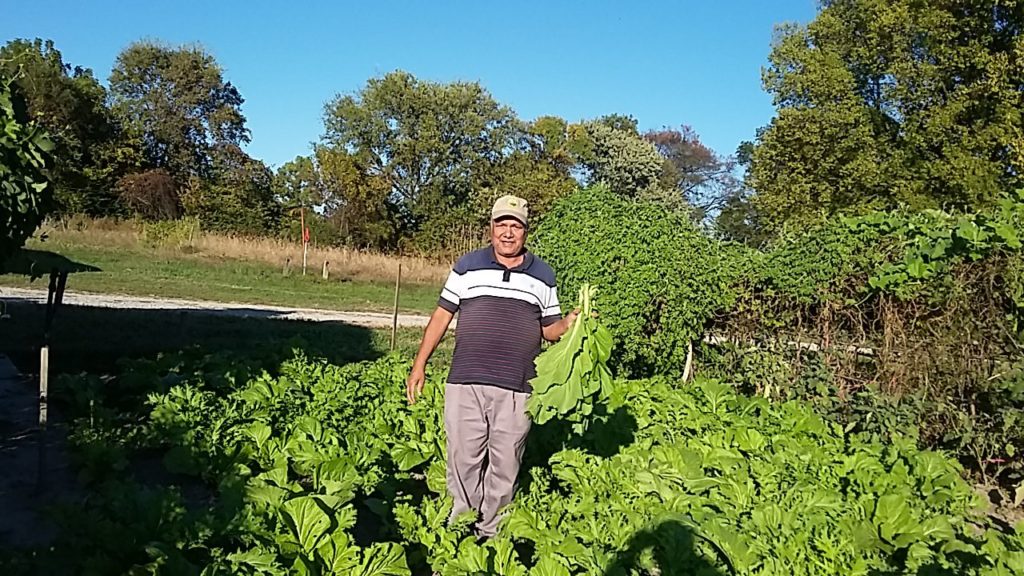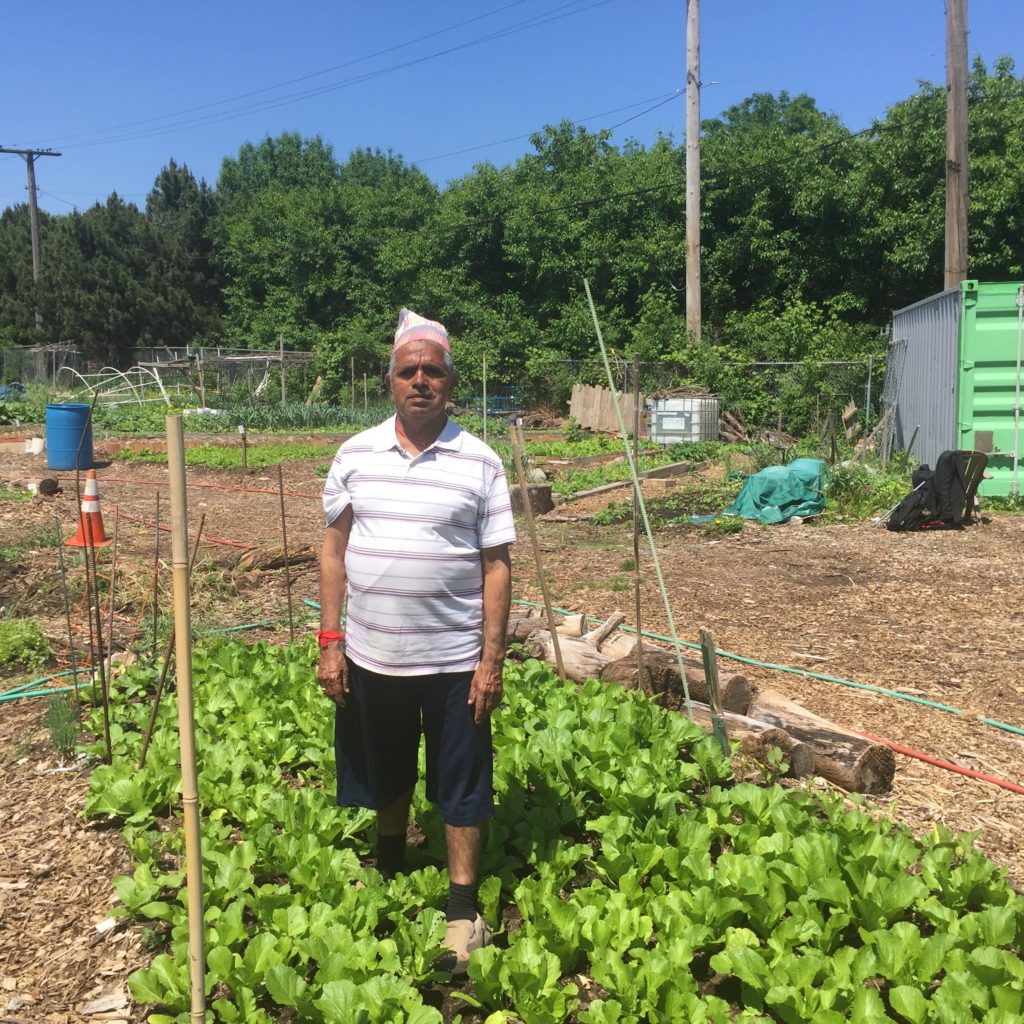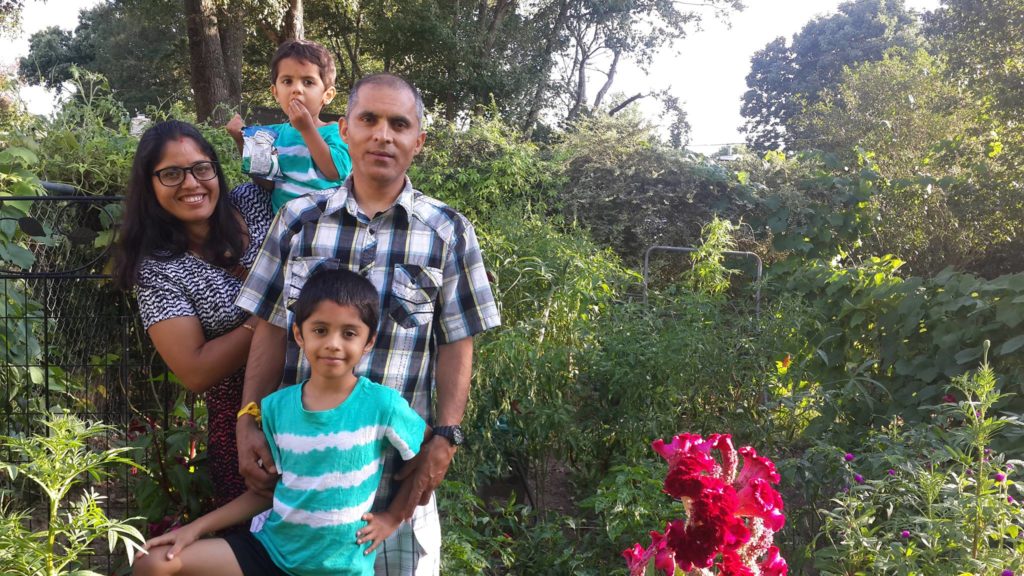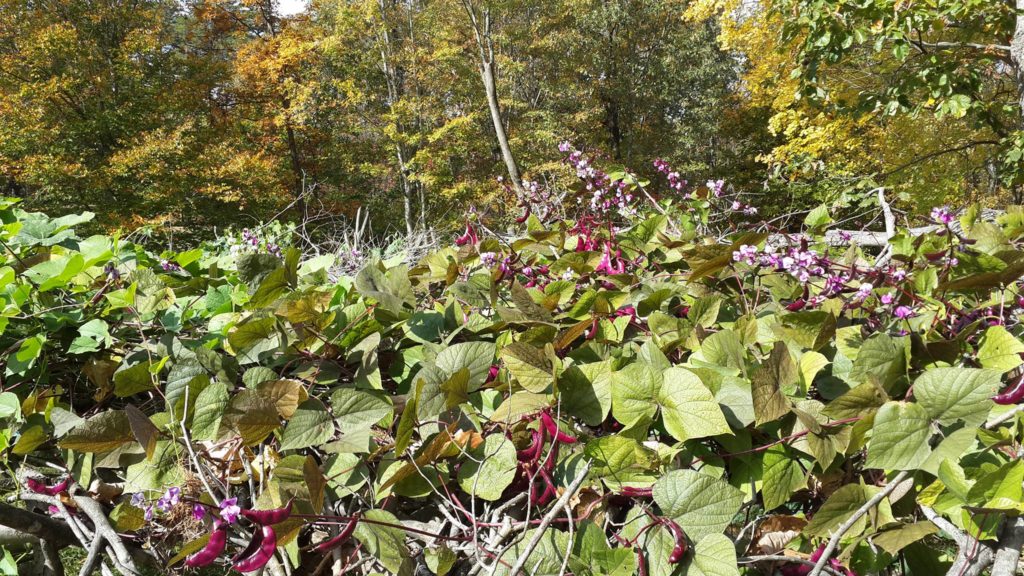By Buddha M Dhakal, Bhagat Rizal and C M Niroula
November 8, 2016, Louisville
A passion for gardening
When a small group of Nepali speaking refugees from Bhutan came to Louisville in 2008, the resettlement agencies knew all about their work history was that they were farmers in Bhutan or Nepal.
At the time when job seeking for many of these unskilled and uneducated elders was a herculean task, Catholic Charities of Louisville brought a program to engage such unemployed elders in gardening. That involved simple tools and techniques of farming in small spaces provided by some churches and community centers. A group of such middle-aged men and women from Myanmar, Burundi, Congo and Somalia also participated in the program in the first phase.

This program (Refugee Agriculture Participatory Program) of urban farming later received funding from ORR to expand the program to include more people and get more vacant lands to cultivate.
Participant gardeners Gajadhar Dhakal, Teknath Dhakal, Chuda Adhikari and Tanka Adhikari were hired temporarily and soon laid off from the seasonal jobs in 2009. So gardening became their favorite pastime; they worked each day of the growing season to produce best of the vegetables. Bishnu Bhakta Dahal, on the other hand, was a full time employee at a packaging company, but dared to take the gardening for his hard work in Bhutan/Nepal had given him enough stamina for the physical work both ways.

Tanka Adhikari is still a gardening hero in his seventh street garden site. Each day he walks 20 mins to his garden, work all day with the soil and plants he loves, and returns to his one bedroom apartment in the evening. Most of his produce- Asian vegetables- are the ethnic food of Burmese, Chinese, Vietnamese, Nepali and Indian. Okra, string beans, chayote, mustard green, Asian spinach, bitter melons, gourds, snake gourds and pumpkins are what he grows and sells every growing season from May to October.
The refugee agriculture program trained gardeners like Tanka for the initial start-up of seedlings, gave seeds, took for onsite training and workshop tours to other states too.
In Chicago’s Global Garden Refugee Training farm, veteran gardener Ram Chandra Khatiwoda, commutes every day in public transportation to reach the garden. There he grows organic potatoes, mustard, peppers, cilantro, and beans.

Khatiwoda, 57, feels that coming to the garden gives him exercise his body needs. “I am willing to put extra work if I get another garden because of its health benefits to body and mind”, says Khatiwoda as he finishes watering his plants.
Along with Khatiwoda, Tulasha Darnal, another Bhutanese gardener comes to the garden regularly.
“Although we eat food from the garden everyday, and share to the neighbors, we still make some cash,” says Darnal, who prepares her family food from the fresh harvested product.
About seventy Bhutanese families participate in gardening with GGRTF, a Community Supported Agriculture [CSA] garden where community members pay $350 member fee and pick up food on a weekly basis. In addition to distributing food to the community members, these gardeners occasionally sell food in farmer’s market of Humble park.
Biodiversity of vegetables:
Hasta Bhattarai, a social activist, works with these gardeners in Global garden to help meet their needs- interpretation, securing plots, garden preparation and communicating with the management.
According to him, the diversity of vegetables grown is amazing- bitter melon, eggplant, bitter eggplant, peppers, inkberries, mustardgarlic, garlic, onion, beans, swiss chard, amaranth, sorrel, purslane, daikon, carrot, basil, cilantro, cucumber, bottlegourd. Some of the products are stored frozen, while some preserved after certain processing. Asian greens are mostly turned to gundruk– abiotically fermented and preserved. Similarly, the daikons (radish) in excess is turned to sinki– fermented and dried sour radish.

In New Hampshire, Common Earth Farm in Bedford is a private land donated by Gail Prince, a retired colonel. Here, Kharananda Niroula is the most active. The growing season is pretty short there, but a variety of ethnic vegetables are grown. A typical Nepali pod in vine-Tookruke or Barela (balsam apple) is nowhere in the region, but this farm. “We got second place last year in garden fair due to this new vegetable”, exclaims Kharananda.
“I feel like I’m in Bhutan. I remember my life in Bhutan – farm and my cattle- when I’ve started working in this farm. This piece of land give me sense of satisfaction,” Dilli Basnet of Bedford farm spoke with smiling face.
Teknath Dhakal grew long purple beans, potato and mid-size tomatoes in his backyard. Bottle gourd is still fruiting in his and Hari Dahal’s backyard.
Selling the excess: Most products are sold to individual families or in Manchester farmer market. The largest of all sales is of dalla khursani – the Himalayan hot-ball pepper. “It is sold as much as $40 per pound. People demand from states all over,” said Niroula.
New home owners in Georgia have cleared their backyard to grow such hot-ball peppers, Asian spinach, and pumpkins. Last year, a Regmi family sold around $2500 worth of these Himalayan peppers.
In Louisville, Tanka Adhikari has four 30X30 ft plots. He pays $20 for each plot to the RAPP program. In return, he earns $300-$350 from a single plot of vegetables in a season. It is now end of growing season, but still he has green trailing vines of fruiting Chayote (Iskoos), sponge gourds (luffa) and some greens. Fresh cabbages are taking shapes. “Cabbage continue to grow through snowy winter months too,” Tanka explains.

Bishnu Bhakta Dahal sold packets of green and red chili worth about $500 in the workplace to fellow Bhutanese-Nepali who now form major workforce of packaging company in west Louisville.
Namaste Grocery off the thoroughfares of Bardstown road sells a lot of ethnic vegetables. Pumpkin tips and Chayote tips are best sold ever.
In Southside garden, tall withering bushes of round eggplants and edible hibiscus (Hibiscus sabdariffa) with flower buds are only major vegetables in gardens owned by ethnic Karens from Myanmar.
The common earth farm in Bedford is already cleared. There, growing season is over. In Chicago too, the garden is cleared now as the recommended growing season is 120 days- May to October.

Purchasing and exchanging seeds: Some farmers buy seeds online from Nepal’s online market sites, but majority of gardeners look into the shelves of ethnic stores- Indian, Nepali, Vietnamese and Burmese. Tanka Adhikari bought some seeds of radish and mustard green from a Burmese grocery store. “And that gave good yield,” he says. He also got seeds from his mother in-law in Lancaster, PA.
Kharananda Niroula of Common Earth Farm in Bedford, NH, shops online for seeds. But they also exchange seeds- carry from one state to another during family visits. Niroula sent hot pepper to Texas and Colorado via mail.
Very often, the seeds harvested in different climate zone do not grow well or not produce any fruit. But Bhutanese gardeners have tried to get first generation seeds from those imported seeds and get the second generation plants to yield.
Rewati Dhakal got seeds of good yielding and tasty pumpkin from a relative in Georgia last year. They yielded well in her backyard in Louisville.
Gardeners buy seedlings at local stores. The Global Garden farm management provides some seeds that are requested by the gardeners. Same is the case with RAPP program in Louisville.

More than consumption
Gardening has obviously helped resettled people keep in a social relationship, keep connected and even way to share gifts. Vegetables , seeds and live plants are exchanged. Instead of fancy store gifts, Bhutanese people go to cultural gatherings carrying fresh produce.
Hasta says, “it is keeping our traditional relationships intact.”
In a way gardening contributes to self-sufficiency.

